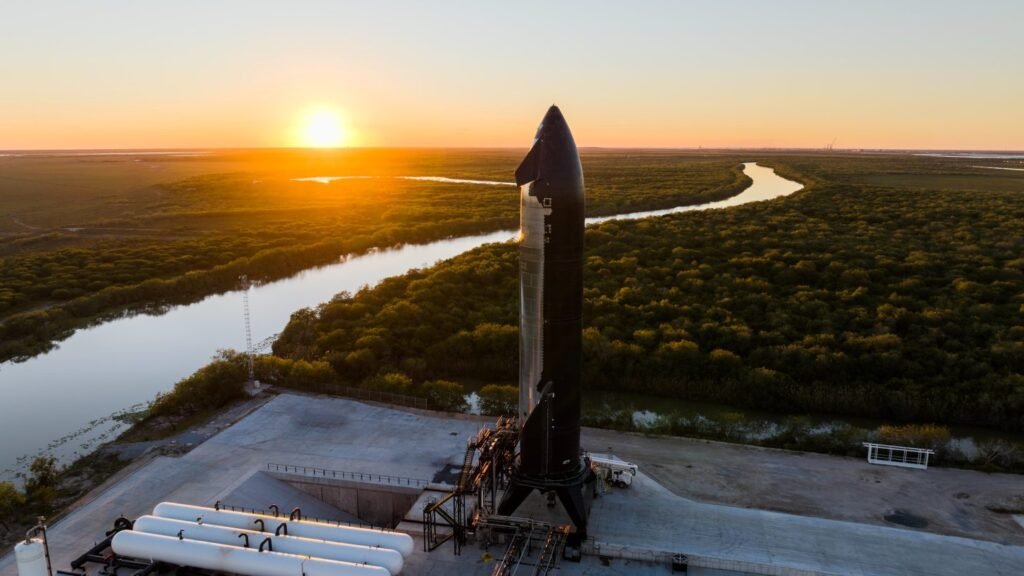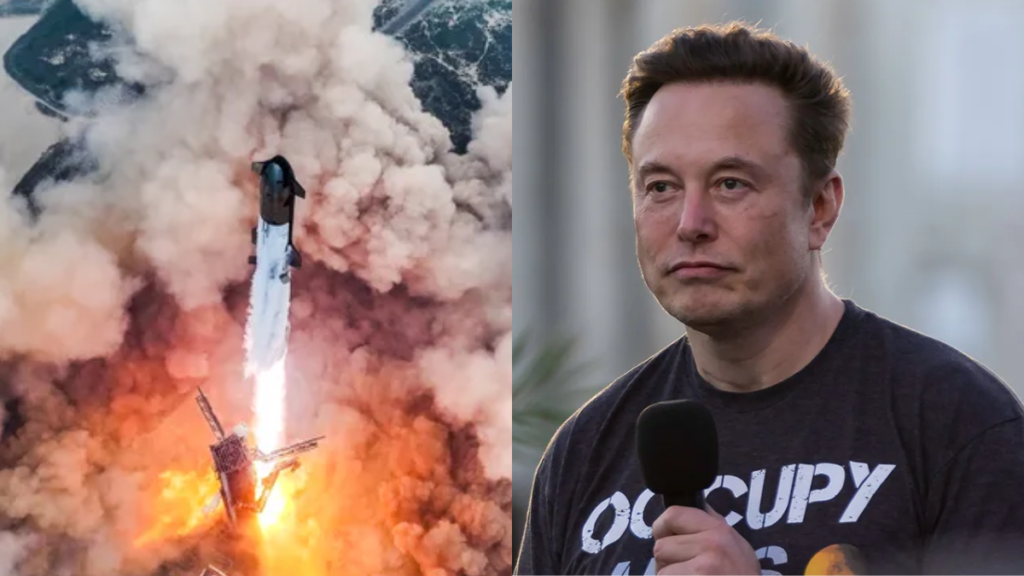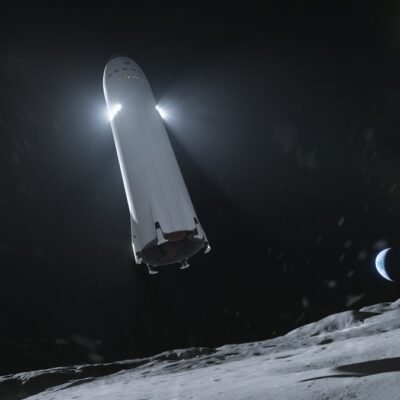The Starship explosion has once again brought global attention to Elon Musk’s SpaceX program. As the most powerful rocket ever built, Starship holds enormous potential for deep space exploration, including future missions to the Moon and Mars. But with high ambition comes high risk, and the recent fiery blast during a test launch has raised many questions. What went wrong? What does this mean for the future of Starship and SpaceX’s larger goals?
In this article, we’ll break down everything you need to know about the Starship explosion—why it happened, what’s next, and why this failure might not be as bad as it seems.
What is Starship and Why Is It Important?

Before diving into the Starship explosion, it’s important to understand what Starship is and why it’s such a big deal in the aerospace world.
Starship is a fully reusable spacecraft and rocket system developed by SpaceX. It’s designed for a variety of missions—from launching satellites and carrying cargo to transporting humans to the Moon and eventually Mars. Standing over 390 feet tall with the capacity to carry 100+ tons into orbit, Starship is the biggest and most ambitious rocket ever built.
Key Goals of Starship:
- Make space travel more affordable with reusability
- Support NASA’s Artemis missions to return humans to the Moon
- Eventually transport settlers to Mars
- Enable point-to-point travel on Earth using suborbital flights
With such ambitious plans, every test matters. But as with any advanced technology, failures are part of the learning process.
What Happened During the Starship Explosion?
The latest Starship explosion occurred during a test flight from SpaceX’s Boca Chica launch facility in Texas. The mission was intended to demonstrate the full stack performance of both the Super Heavy booster (first stage) and the Starship upper stage (second stage).
Here’s a simplified timeline of what went wrong:
Timeline of Events:
- Liftoff: The rocket launched successfully and began its ascent with full engine thrust.
- Booster Separation: Trouble started during stage separation. The Super Heavy booster and Starship upper stage failed to cleanly detach.
- Loss of Control: Shortly after separation, both stages began to spin out of control.
- Explosion: The flight termination system was activated, leading to a controlled self-destruction of both parts.
SpaceX confirmed the termination was intentional and a safety measure to avoid greater risks.
Why Did the Starship Explosion Happen?
Initial analysis suggests multiple issues contributed to the Starship explosion. These include:
1. Booster Separation Malfunction
Starship uses a complex “hot staging” method to separate the stages mid-flight. This is a tricky process, especially at such a large scale. A small timing error or pressure miscalculation could have led to the failure.
2. Engine Instability
SpaceX engineers reported unusual pressure readings and instability in the Raptor engines. If even one engine fails during a critical phase, it can lead to structural damage or control issues.
3. Software or Sensor Glitch
With so many sensors and onboard computers managing the flight, any software bug or data misread can trigger safety protocols or flight termination.
4. Structural Failure
Some experts believe the rocket’s body might not have handled the extreme forces during stage separation, causing a break-up.
The exact cause will be revealed once the full investigation is completed, but SpaceX has already begun analyzing flight data.
Elon Musk’s Response to the Explosion

Elon Musk, founder and CEO of SpaceX, remained positive after the Starship explosion. He posted on X (formerly Twitter), praising the progress made and the valuable data collected from the test.
“Another step forward! While we didn’t reach full success, we learned a ton and the next version will be even better,” he said.
This attitude reflects SpaceX’s fail-fast philosophy. Instead of fearing failure, the company embraces it as part of rapid iteration.
Is This the End for Starship?
Not at all. In fact, SpaceX is already working on improvements for the next test flight. While explosions may seem like major setbacks, they’re common in the development of new spacecraft—especially those as complex as Starship.
What’s Next:
- Updating the hot-staging system
- Reinforcing the Super Heavy booster’s reliability
- Making software and sensor adjustments
- Building newer prototypes for quicker relaunch
NASA, which has selected Starship to land astronauts on the Moon, has not pulled back its support. Instead, it recognizes the risks involved in pushing boundaries and remains optimistic about future missions.
A History of Starship Explosions and Test Flights
This isn’t the first Starship explosion, and it likely won’t be the last. Here’s a brief look at previous tests:
| Date | Test | Outcome |
|---|---|---|
| Dec 2020 | SN8 | Crash landing, exploded on impact |
| March 2021 | SN11 | Mid-air explosion |
| April 2023 | First full-stack | Stage separation failure, exploded |
| Nov 2023 | Second flight | Booster reentry failure |
| March 2025 | Third flight | Stage separation explosion |
Each test has helped SpaceX make critical improvements.
What This Means for the Future of Space Travel
The Starship explosion may seem like a disaster to casual observers, but within the space industry, it’s just part of the journey. Developing new rockets is extremely complex, and even NASA experienced many launch failures in its early years.
Lessons Learned:
- Failing is valuable. Each failure gives engineers real-world data.
- Ambition takes time. SpaceX is attempting something no one has done before.
- Public expectations must adjust. Spectacular explosions don’t mean permanent failure.
Once Starship becomes operational, it could reduce the cost of spaceflight by 90% and revolutionize how we explore the cosmos.
How the Public and Experts Reacted
Public reaction to the Starship explosion was mixed. While some criticized the setback, many applauded SpaceX’s bold vision.
On Social Media:
- Supporters highlighted SpaceX’s transparent live streams and willingness to test openly.
- Critics questioned the safety and environmental impact of repeated explosions.
- Experts, however, largely viewed it as a necessary step in the process.
NASA administrator Bill Nelson commented, “SpaceX is learning fast, and their success is America’s success in space.”
Final Thoughts: A Setback or a Step Forward?
While the Starship explosion captured headlines with fiery images and dramatic video clips, the event represents progress more than failure. SpaceX continues to push the envelope, knowing that each explosion is one step closer to a breakthrough.
The future of human spaceflight, Moon missions, and even Mars colonization may very well ride on the success of Starship. And like all great innovations, it’s being built on the back of trial and error.
SpaceX’s motto has always been: “Fail fast, learn faster.” The recent explosion fits perfectly within that mindset.
Also Read – Gonzaga vs Kansas Prediction: Who Will Win This Epic Matchup?





